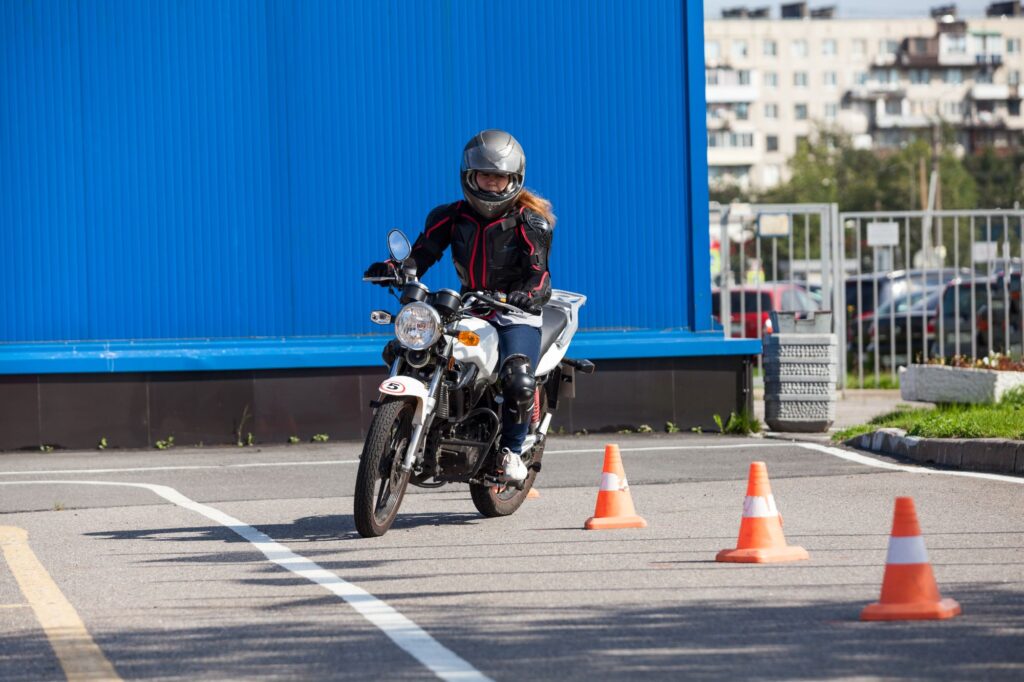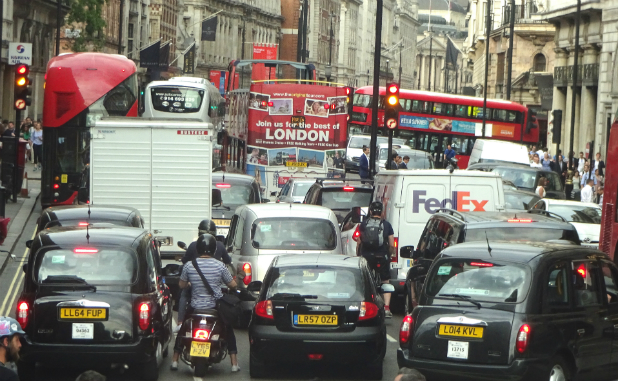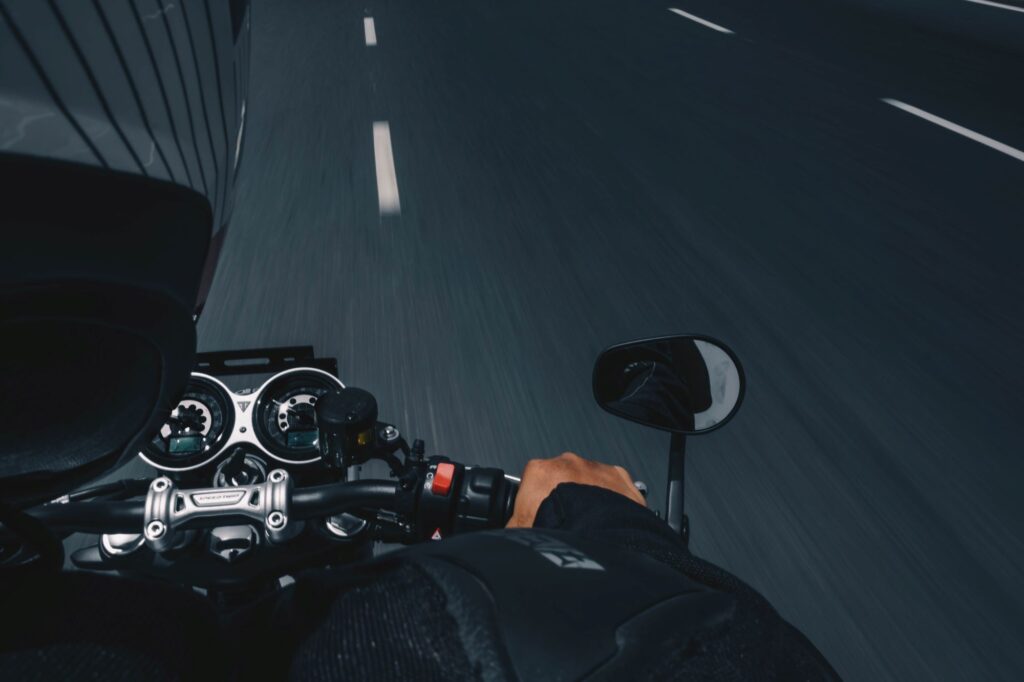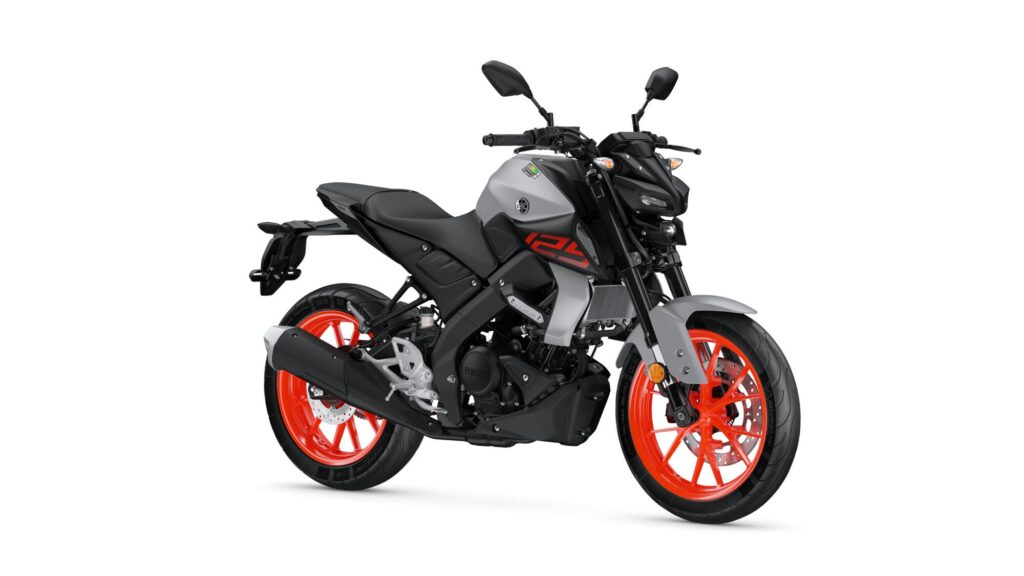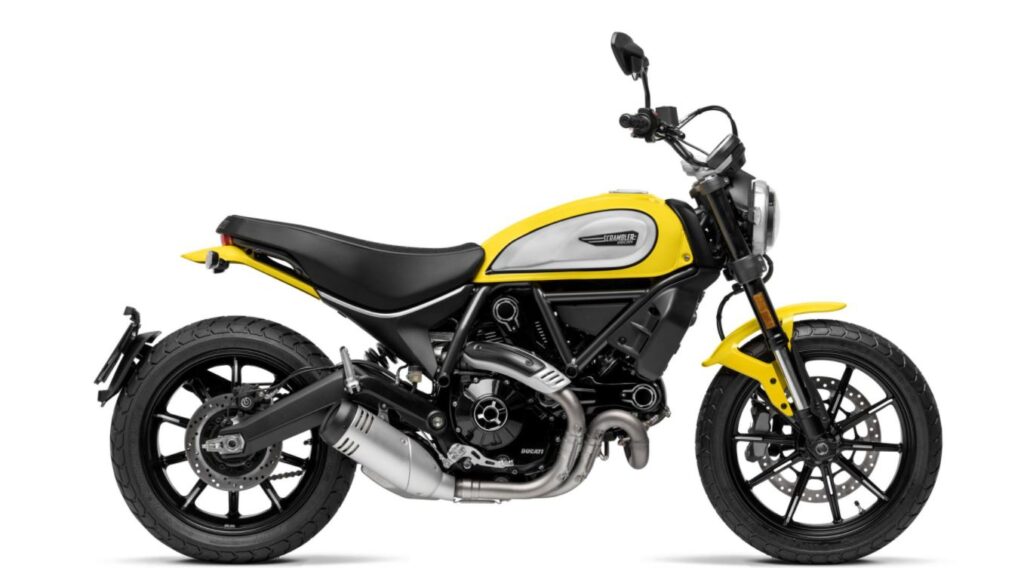Biking, at least according to the usual boilerplate, is all about freedom and individuality. Obviously this isn’t entirely true, otherwise there wouldn’t be clubs where everyone owns the same make of bike, but it is still an important factor in their appeal.
Nevertheless, the urge to stamp your identity onto your bike is strong, and people have been customising their motorcycles, either for performance or appearance, since they were invented. Bikesure takes a look at the history of custom motorbikes.
The exact origins of custom bikes are lost in the mists of time, and kind of blur together with the phase of motorcycle history when “owning a bike” usually meant “building one”.
One of the earliest custom motorcycles we know about was built by Harold “Oily” Karslake, an engineer and trails rider who lived at the turn of the 20th century. In 1902 he built a motorcycle, the Dreadnought, which combined the frame and engine from different machines and unique scratch-built components. Whether or not it was the first custom bike built is impossible to say for sure, but it’s the first one we know about. Karslake wrote about it in a booklet he published in 1911, and astonishingly the Dreadnought survives to this day, owned and maintained by the Vintage MotorCycle Club.

One of the main forces guiding the development of custom bikes was sport. The Dreadnought was built for endurance races, and indeed was still winning into the 1920s, long after it had technically been outclassed. The 1920s saw the emergence of dirt track racing in Australia and America, with many riders adapting road bikes to go faster on rough ground.
The motorcycles of the first two decades of the 20th century were ergonomically similar to bicycles, with the seating position in the “sit up and beg” posture. This gave them a high centre of gravity which makes handling a tad tricky. Over the years manufacturers began to adapt the shape of bikes, which resulted in a frame that swept diagonally up from the rear wheel incorporating a lower seat.
‘Merica
It was relatively easy for people to adapt older bikes to this new style, and this saw the emergence of the first style of custom bike widespread enough to garner its own name, the cut down.

The cut down was an American phenomenon, based on adapting the Harley-Davidson J model. In its unmodified form they were one of the last Harleys to be built with something approaching the bicycle type frame, but close enough to the newer frame style that adapting it was relatively simple to do. Cutting down was a great way of transforming older bikes for those on a budget, and it wasn’t long before enterprising riders were jumping on the custom bandwagon.

In 1933 the American Motorcyclist Association introduced a new class of racing, which only allowed catalogued racing motorcycles to be used in official events. In order to squeeze extra speed out of their bikes competitors began removing as much excess weight as possible, by cutting back – or bobbing – unnecessary details like fenders. Once again, non-racers began to copy this style for the performance benefits, and the bob-job became the next big customisation style.
Bobbin’ and Choppin’
Now we reach the part in any history of motorcycles where we mention the effects of World War 2 on the evolution of biker culture. Although a global phenomenon, in terms of custom motorcycles the main innovations emerged from the United States and Great Britain.
You know the score: returning soldiers looking for cheap transport, camaraderie and excitement, get motorcycles, form clubs and generally let their hair down after living through the horrors of war. American aficionados had known about the superiority of European motorbikes since before the war – indeed, cut downs and bob-jobs had been an attempt to replicate their performance, and components of British motorcycles had been much sought after for early US customisers.
Many American soldiers had grown to love the European bikes they had used during the war, and this, coupled with the availability of cheap ex-military motorcycles, saw a huge increase in the number of people customising their rides. Increasingly, aesthetics were just as important as performance, with flamboyant paint jobs becoming more popular. This trend was brought over from the world of custom cars, drawing inspiration from the burgeoning Hot Rod and drag racing scenes.
Throughout the fifties a new breed of customisers began to develop more radical modifications. Still largely based on Harleys, they drew inspiration from dragster motorcycles, adding in raked forks, swapping in larger wheels and smaller fuel tanks, as well as lashings of chrome. Combined with flamboyant, pin-striped paint jobs, the custom scene was a reflection of the same energy that helped popularise rock and roll. This style became known as Kustom Kulture and its influence can be felt to this day, with the continued popularity of vintage and rockabilly styles being the latest manifestation.
As the forks got longer and longer, more extreme work was required on the frames to get the bikes to work. Instead of minor cuts and bobs, this new breed required the original bike to be all but completely dismantled, before chopping and reassembling the frame so it could accommodate the extended forks. And thus was born the chopper.

Throughout the 1960s builders pushed the chopper further, with longer forks and more elaborate decorations. The public image of choppers was solidified by the release of the 1969 counter-culture classic Easy Rider, which starred Peter Fonda and Dennis Hopper riding two particularly fine choppers that demonstrate exactly how far the customiser’s art had come since the cut-down days.

Meanwhile, in the UK…
The main difference between motorcycle culture in the UK was that, well, our bikes were better and, on the whole, didn’t need to be altered as much. While there were doubtless many customised British bikes following in the wake of the Dreadnaught, they have by and large gone unrecorded by history, presumably seen as part of the great British tradition of tinkering in the shed rather than something requiring a lot of fuss and its own special name.
Nevertheless, the Second World War shook things up.
Over here it wasn’t returning soldiers that formed the bulk of the new biker culture. These often war-damaged men had too much work rebuilding the country. Instead, a newly emerging demographic discovered bikes as the effects of austerity and rationing wound down – teenagers. These new bikers would often meet up at transport cafes, using them as the start and end points for racing. Because of this they became known as Café Racers, with the name eventually being applied to the bikes they rode too.

The big dream for Café racers was to “do the ton” – reach 100mph. While there were plenty of bikes that could do this, not many of them were priced within the range of the average teenage biker. As in America the solution was to find an older, cheaper bike and bring it up to modern standards. Whereas America’s customs were inspired by dirt track and drag racing, British customs took after road racers, with speed and handling being the most important considerations. Long handlebars, a seat pushed as far back as possible and rear-set footrests allowed riders to tuck themselves into the bike to reduce wind resistance.
Cafe Racer bikes were often two different bikes combined, in order to get the best of both brands. For example there was the Triton which took a Triumph engine and added it to the frame of a Norton. Or the Tribsa – a Triumph engine and the frame from a BSA. If you had money to spare you might be able to get a V-twin engine off a mighty Vincent to create the Norvin, although the price difference made them rarer.
The Cafe Racer was a constant throughout the fifties and sixties, remaining popular even as the people riding them changed from Ton-Up Boys to Greasers to Rockers. Change was inevitable, as it tends to be, and as the seventies got into gear the dominance of the British motorcycle industry had taken a few knocks. Not only was it facing competition from Japanese companies, but the quality of the bikes was beginning to suffer. Of course no matter where it’s from a motorcycle is still, fundamentally, a motorcycle and the kind of changes you can make to it are going to be broadly similar. Stripping it down to the bare essentials, then making what’s left look good.
The suite of modifications for Japanese Sportsbikes involved the usual removal of unnecessary decorations, as well as swapping in upright, motocross style handlebars, loud mufflers and, most distinctively, two front headlights. Designed to accentuate the aggressive nature of these racing bikes, they became known as streetfighters.

Factory customs and customs factories
Manufacturers have always been aware of what the customisers were doing with their products, and there is a long history of them reincorporating ideas from the custom scene into official products; the factory custom. The first “official” custom bike is generally given as the Harley-Davidson Super Glide, which incorporated the front end of a Sportster with the chassis from the larger FL models, and many have followed since then.

Meanwhile, custom garages proliferate, turning out increasingly ambitious projects. Modern chopper makers aren’t just sticking bits of bikes together, they’re often making bespoke components from scratch, with the end results being rideable works of art. While they are beautiful pieces of engineering, these high-end custom machines are out of the price range of most riders.

Recent years have seen the popularity of custom bikes rise to ever higher levels. This has been helped by shows like American Chopper, which ran for over 160 episodes and has spawned several spin-offs. These bikes represent the high point of chopper making, with end products that look spectacular, but probably spend most of their life looking spectacular in the garage of a millionaire. In 2011, British artist Grayson Perry made a custom motorcycle a key part of his “Tomb of the Unknown Craftsman” show, which takes the idea of your motorcycle as an expression of your individuality to its ultimate conclusion.

While the fancy section of the market was in rude health, a new breed of engineers emerged who were more interested in the earlier styles of customs. Recent years have seen huge numbers of new custom bikes being made which reinvent fashionable vintage styles with restraint and an eye for detail. Sites like Bike Exif have helped to popularise this new wave, with a seemingly endless stream of new cut downs, bobbers, cafe racers and all manner of hybrids.
While the products of these boutique garages are still pretty dang expensive, they’re far more achievable by ordinary mortals doing their own custom jobs. In addition to this, manufacturers have been working directly with garages to create a new generation of factory customs, which goes alongside the comprehensive range of classic choppers that have jumped the divide and become a mainstay of the motorcycle market. With the announcement that Triumph will be launching a bobber in 2017 it looks like our love affair with custom bikes is in no danger of disappearing just yet …
Thinking about getting a custom bike yourself?
If you’re in the market for a custom bike, make sure you choose an insurance specialist like Bikesure. We offer custom bike insurance that suits your motorcycle, whether you’ve built the bike yourself or you’ve bought a factory custom.
You May Also Like …
Southport’s Easy Rider Howard Morris shares his collection of US custom bikes

